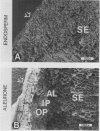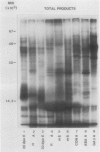Abstract
To widen the selection of proteins for gene expression studies in barley seeds, experiments were performed to identify proteins whose synthesis is differentially regulated in developing and germinating seed tissues. The in vitro synthesis of nine distinct barley proteins was compared using mRNAs from isolated endosperm and aleurone tissues (developing and mature grain) and from cultured (germinating) aleurone layers treated with abscisic acid (ABA) and GA3. B and C hordein polypeptides and the salt-soluble proteins β-amylase, protein Z, protein C, the chymotrypsin inhibitors (CI-1 and 2), the α-amylase/subtilisin inhibitor (ASI) and the inhibitor of animal cell-free protein synthesis systems (PSI) were synthesized with mRNA from developing starchy endosperm tissue. Of these proteins, β-amylase, protein Z, and CI- 1 and 2 were also synthesized with mRNA from developing aleurone cells, but ASI, PSI, and protein C were not. CI-1 and also a probable amylase/protease inhibitor (PAPI) were synthesized at high levels with mRNAs from late developing and mature aleurone. These results show that mRNAs encoding PAPI and CI-1 survive seed dessication and are long-lived in aleurone cells. Thus, expression of genes encoding ASI, PSI, protein C, and PAPI is tissue and stage-specific during seed development. Only ASI, CI-1, and PAPI were synthesized in significant amounts with mRNA from cultured aleurone layers. The levels of synthesis of PAPI and CI-1 were independent of hormone treatment. In contrast, synthesis of α-amylase (included as control) and of ASI showed antagonistic hormonal control: while GA promotes and ABA reduces accumulation of mRNA for α-amylase, these hormones have the opposite effect on ASI mRNA levels.
Full text
PDF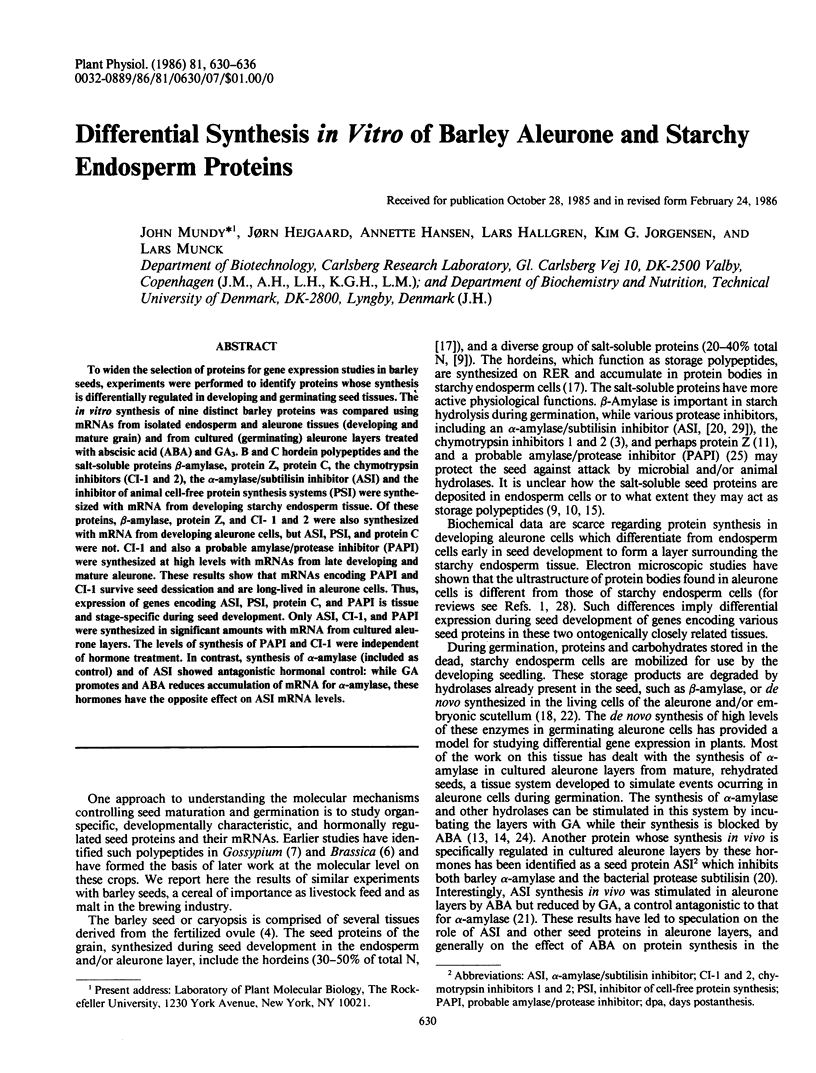
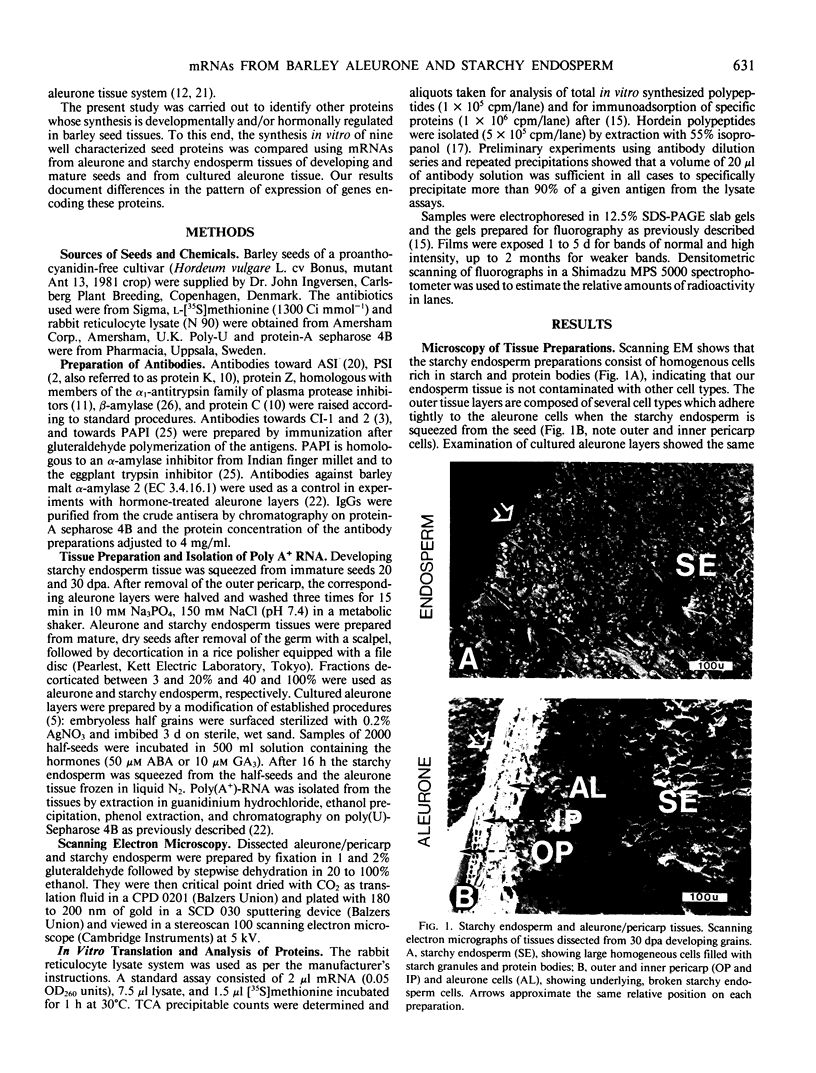
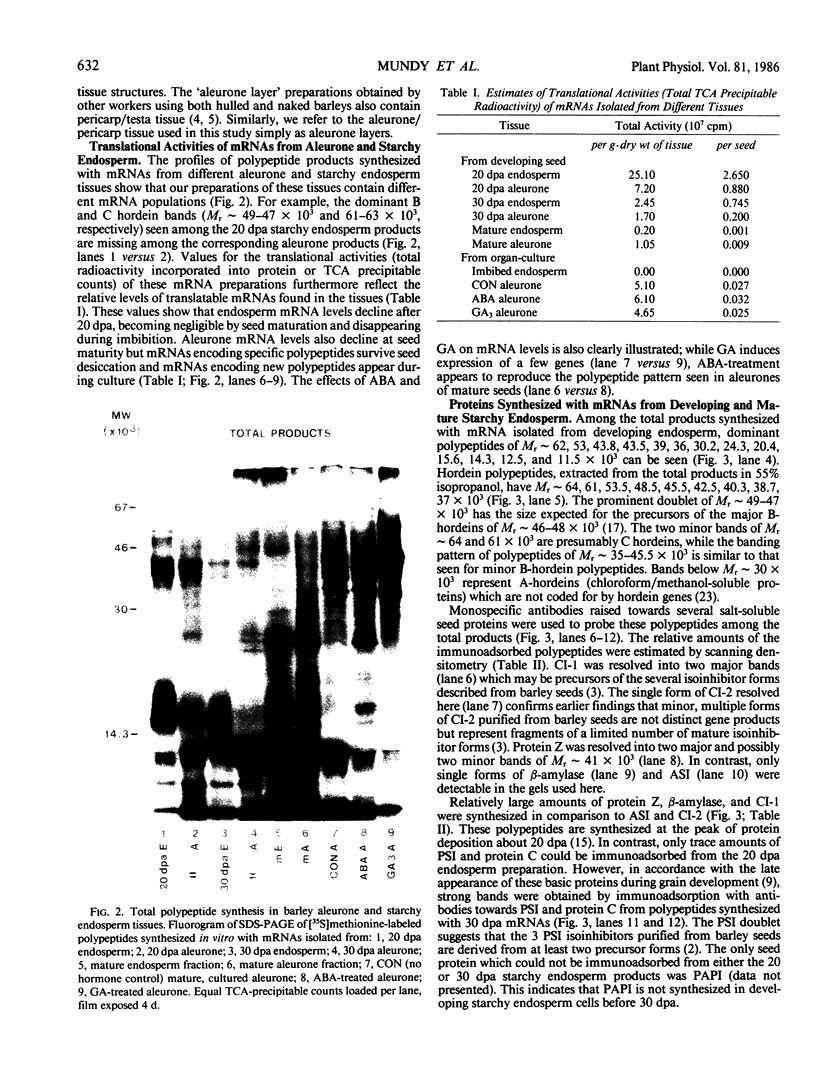

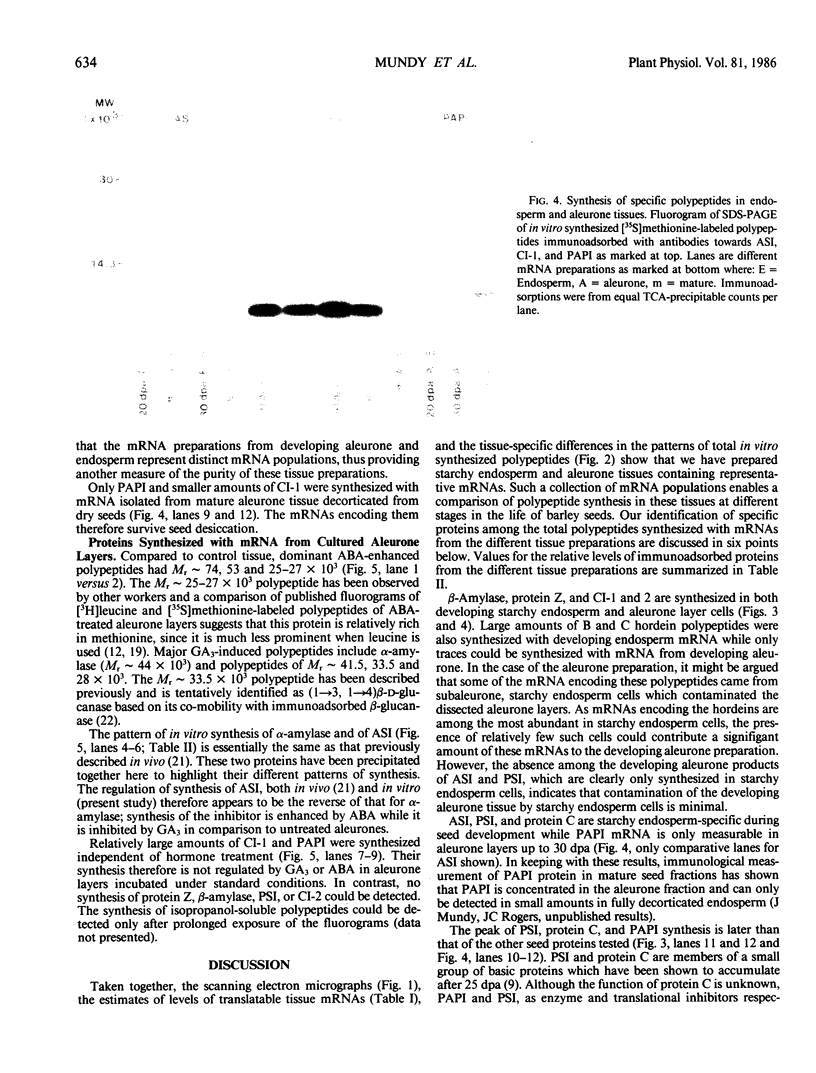
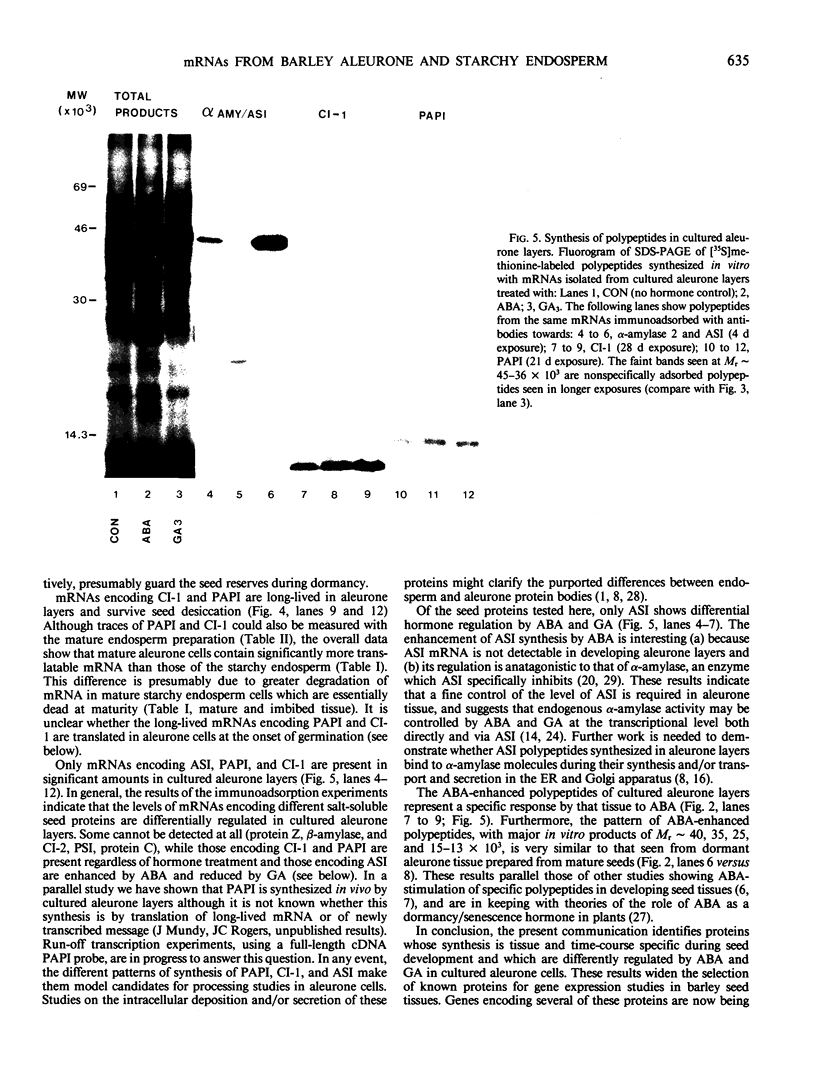
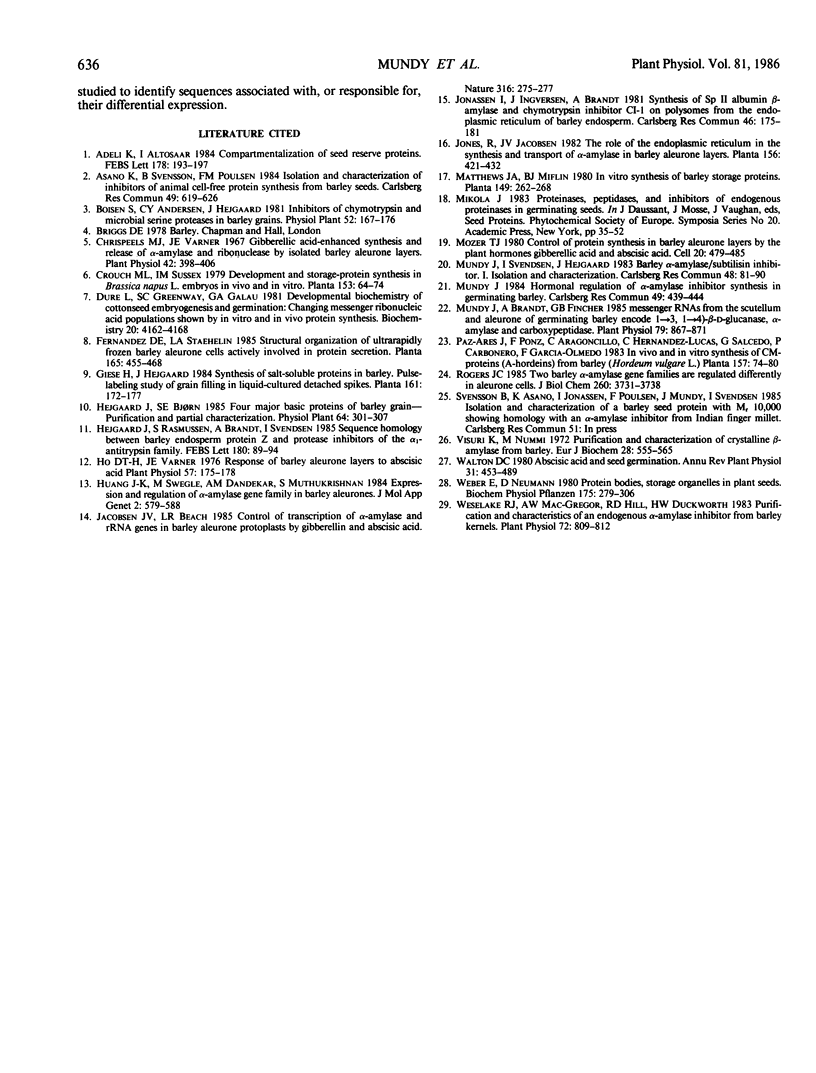
Images in this article
Selected References
These references are in PubMed. This may not be the complete list of references from this article.
- Chrispeels M. J., Varner J. E. Gibberellic Acid-enhanced synthesis and release of alpha-amylase and ribonuclease by isolated barley and aleurone layers. Plant Physiol. 1967 Mar;42(3):398–406. doi: 10.1104/pp.42.3.398. [DOI] [PMC free article] [PubMed] [Google Scholar]
- Dure L., 3rd, Greenway S. C., Galau G. A. Developmental biochemistry of cottonseed embryogenesis and germination: changing messenger ribonucleic acid populations as shown by in vitro and in vivo protein synthesis. Biochemistry. 1981 Jul 7;20(14):4162–4168. doi: 10.1021/bi00517a033. [DOI] [PubMed] [Google Scholar]
- Ho D. T. Response of barley aleurone layers to abscisic Acid. Plant Physiol. 1976 Feb;57(2):175–178. doi: 10.1104/pp.57.2.175. [DOI] [PMC free article] [PubMed] [Google Scholar]
- Huang J. K., Swegle M., Dandekar A. M., Muthukrishnan S. Expression and regulation of alpha-amylase gene family in barley aleurones. J Mol Appl Genet. 1984;2(6):579–588. [PubMed] [Google Scholar]
- Jennison T. A., Finkle B. S., Chinn D. M., Crouch D. J. The quantitative analysis of 1-alpha-acetylmethadol and its principal metabolites in biological specimens by gas chromatography-chemical ionization-multiple ion monitoring mass spectrometry. J Chromatogr Sci. 1979 Feb;17(2):64–74. doi: 10.1093/chromsci/17.2.64. [DOI] [PubMed] [Google Scholar]
- Mozer T. J. Control of protein synthesis in barley aleurone layers by the plant hormones gibberellic acid and abscisic acid. Cell. 1980 Jun;20(2):479–485. doi: 10.1016/0092-8674(80)90634-0. [DOI] [PubMed] [Google Scholar]
- Mundy J., Brandt A., Fincher G. B. Messenger RNAs from the Scutellum and Aleurone of Germinating Barley Encode (1-->3,1-->4)-beta-d-Glucanase, alpha-Amylase and Carboxypeptidase. Plant Physiol. 1985 Nov;79(3):867–871. doi: 10.1104/pp.79.3.867. [DOI] [PMC free article] [PubMed] [Google Scholar]
- Rogers J. C. Two barley alpha-amylase gene families are regulated differently in aleurone cells. J Biol Chem. 1985 Mar 25;260(6):3731–3738. [PubMed] [Google Scholar]
- Visuri K., Nummi M. Purification and characterisation of crystalline -amylase from barley. Eur J Biochem. 1972 Aug 4;28(4):555–565. doi: 10.1111/j.1432-1033.1972.tb01944.x. [DOI] [PubMed] [Google Scholar]
- Weselake R. J., Macgregor A. W., Hill R. D. An endogenous alpha-amylase inhibitor in barley kernels. Plant Physiol. 1983 Jul;72(3):809–812. doi: 10.1104/pp.72.3.809. [DOI] [PMC free article] [PubMed] [Google Scholar]



